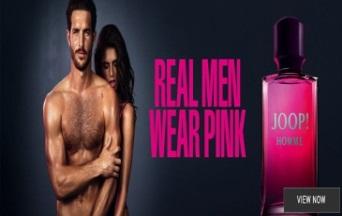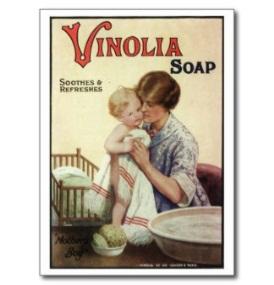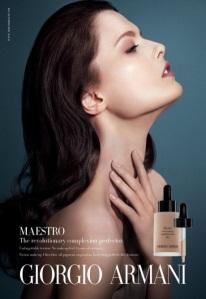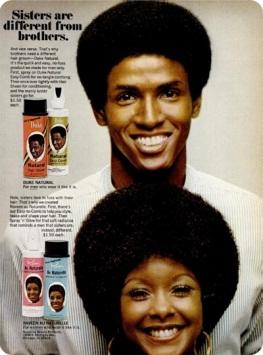Introduction
Advertising is the art of publicizing one’s product, service, need especially by paid broadcasts in newspapers and magazines, over radio or television, or on billboards. The purpose of advertising is mainly to promote public awareness to boost sales, build company reputation, and solicit support or votes. It possesses all the elements of communication, i.e., it has a source or sender, the message, the intended audience, and the medium (Stuart & Ewen, 1992).
It is an art whose history is as old as the origin of trading and has since then undergone transformations depending on changes in business demands, media technologies, innovations, fashion, and culture. The research study examines sexuality and gender portrayal in cosmetic advertising. It focuses on how content analysis effects both sex and interrogate the role of sexual imagery as part of branding message intended to sell products. It also assesses the correctness of truths conveyed to and the effect of these advertising images to the audience.
Advertisements as Cultural Indicators
Traditional advertising methods included shop signs mounted on poles, walls, or trees. However, the invention of printing in the 15th century ushered in the new era of commercial advertising. Analyzing an advertisement, as a historical document, may provide important clues to societal conditions at the time the advertisement was prepared. It is not easy, however, due to the discriminatory nature in which advertisements portray the world. As Daniel Pope (2004) puts it, marketing of artworks serves to reconfigure the “world as it is to fit the marketing needs of the business system” (para. 7). It is worth noting that advertisements market tools and point to the business needs of entities that pay for them, represent the ambitions and fears of the professionals who created them, and are remotely cultural indicators.
Gender vs. Sexuality
Sexuality refers to a person’s sexual inclination or likings. Gender, on the other hand, “are manners, traits, and judgments that a given culture links with a person’s biological sex” (Stuart & Ewen, 1992, p. 1). According to Ford (2008), feminine and masculine qualities are “cultural products, not biological features”(p. 2). Cosmetic advertising may give us insight into the roles played by men and women in life, their perception, and future as a people.
Cosmetic ads usually feature female models deemed popular among the target customers. They portray a woman in various chores as a homemaker, business woman, an active girl, and as a social lady. Historically, cosmetics adverts conveyed a woman concerned about beauty, cleanliness, family, and pleasing men while men were shown busying themselves in search for fun. In the early 90’s, women started to feature in other vital roles as men were accorded family roles as caring for family, even though the male dominance of important facets of life remained.
Cosmetic Advertisements
The print version of cosmetic advertisements bears pictures with no other verbal element except product and brand name. It is good to reinforce the representation of gender and sexuality by taking a look at some sample advertisement.

The advertisement (Figure 1) portrays gender role played by both man and woman. Between the product and the man and woman is the logo, which ensures that one’s attention is not only drawn to people, but also the product being advertised. The male patriarchy is depicted by presenting the man as “strong, independent, dominant, and in control” while the woman’s slimness could signify her “weak, dependent, and complementary nature” (Gill, 2008, p.36). In addition, the facial contortion portrays her shyness, emotional, and sensitive nature.
The man’s front position accords him the status of the most prominent figure in the advertisement. The woman’s position to the back could be interpreted as a sign of feminine subordination. She is leaning on a man who is smiling, but not reaching out to her, which could be construed as her being an ‘important object’, not a partner to him. Both of them are half naked, an indicator of romantic of relationship. There is no eye connection as the man gives the woman his back. The woman reaches out to the man who in turn stretches his right hand and caresses his left hand. This scenario draws the reader’s attention to the direction of the product. The use of pink, a color associated with female sex to advertise a man’s product, could be interpreted as cue of a struggle for feminine recognition in a male dominated society.

The advertisement of Vinolia soap (Figure 2) portrays the role of a woman as a mother and a homemaker. The presence of a basin of water to the front and baby’s beddings to the back affirms this interpretation. The positioning of the woman holding a child on the floor could indicate the lower position accorded to them in the society. The advertisement accords both the mother and the child of a similar status as they are both playful. The woman holds the child in a posture, which suggests her obsession with the role of motherhood.
Portraying a woman as a homemaker may cause one to believe that women are not capable to function outside the home, and thus, are unable to make decisions or exert power in any situation outside the home (Bonham, 2005). One immediately notices the absence of a man from the picture. Excluding man from the advertisement shows man’s endeavors to distance himself from activities centered at home. He does not consider himself an equal partner in child upbringing or household maintenance, which strengthens the male view that some household tasks can be performed better by women. This advertisement seems to suggest that women must buy this soap to make them happy and good mothers and make their babies restive.
The advertisement of Giorgio Armani (Figure 3) presents a woman who is half naked. The woman is long haired. With one arm, she strokes her long hair to curl around the neck to the front. The same arm loosely caresses her skin. This gesture draws one’s attention to the brand and product names, which feature in the foreground. The body language and posture are made to look sexy. The closed eye, erected neck, and open lips lead one to believe that the woman is in the pursuit of sensual gratification. The stance presents a woman as a sexual object who should make herself alluring to men to be accepted in the society.
The image of “a lush woman enticingly addressing the viewer is used to elicit desired emotions in the viewer” (Schroeder & Borgerson, 1998, p. 162). The woman is shown as young, very white with perfect hair, skin, and attractive looks. This perception is a contracted stereotype of beauty (beauty myth) and spreads an idea that women ought to treat their bodies as objects in constant need of upgrading (Ross, 2012). It creates an idea of perfection which may create anxieties in women and men, leading to a form of false self-awareness. One may be led to think that beauty is all that a woman needs to be successful and that intellect, wit, or personality are not necessary.


The advertisement in figure 4 conveys an image of a culture in which females are a bit empowered. The positioning of the woman in the foreground underscores this interpretation. However, the man covers a big part of the picture showing that he is the most important character. The woman’s head seems to lean on the man’s chest, a sign of feminine subordination. The placement of the logo “Sisters are different from brothers” at the top part of the picture and then placement of male products before those of ladies could be a sign of the creator’s or society’s mixed perception of gender equality at the time when the advert was created.

Figure 5 shows an advertisement with a representation of masculinity in the modern context. The man is presented with smooth features and short hair, using cosmetics or hair care products, and concerned with his looks. This picture contrasts the traditional man who was presented with rough features, mustache, long hair, violent, and less concerned about his looks.
Portrayal of Female Sexuality
Cosmetic advertising has become more bold manipulating images of eroticism, pleasure-seeking, and pictures that clearly defy and subvert cultural values. In the adverts, females are mostly projected from the male perspective rather than showing a realistic portrayal of women.
The objectification of women in ads is not wrong in itself as a large part of our daily life is involved with sexuality. Falsehood emanates from the advertising system that continually tries to present sexuality as the only important aspect about women. According to Beik (2006), defining women in sexual terms indicates “a narrow and restricted perspective that can result in women being treated as lesser than human” (p. 4). There is a need for the advertisers and media to be open to different views of the society and not entirely dictate what it perceives to be correct. This approach will help present the true reflection of gender and sexuality.
Most of the advertisements propagate the belief that people fall into different and opposite sexes with ordinary roles in life as is evident in heterosexual relationships (Pope, 2004). Patriarchy still dominates advertisements perhaps as patriarchal personalities control the media. The presentation of women as homemakers, sexual objects, or beauties causes them to suffer from loss of self-confidence. Their career expectations diminish as they resign to domestic chores. The psychological effect of sexual advertisements on young men is that these ads take their focus away from the brand resulting in a lower recall rate of the brand.
Conclusion
Critical theorists of the Frankfurt school of thought asserted that capitalism made culture an industry where people sell symbols, ideas, brands to get profit and that mass media were a result of its doing. Thus, advertising is an important scheming tool that is steering values of capitalism. It is deceptive, imprisoning people in monotony and thoughtlessness. Therefore, protecting the audience from sexist or misleading adverts is important to avoid exploitation.
References
Beik, R. (2006). Handbook of Qualitative Research Methods in Marketing. Massachusetts: Edward Elgar Limited. Web.
Bonham, L. (2005). Gender Images and Power in Magazine Advertisements: The Consciousness Scale Revisited. Atlanta: Georgia State University Press. Web.
Drury, R. (2014). Mothers Advertising. Web.
Ford, J. (2008). Fashion Advertising, Men’s Magazines, and Sex in Advertising: A Critical-interpretive Study. Tampa, FL: University of South Florida. Web.
Gill, R. (2008). Empowerment/Sexism: Figuring Female Sexual Agency in Contemporary. Sage Journals: Feminine and Psychology, 18(1), 35-60. Web.
Pope, D. (2004). Making Sense of Evidence Series on History Matters: The U.S. Survey. Web.
Ross, K. (2012). Sex/Gender and the Media: From Sex Roles to Social Construction and Beyond. Oxford: Wiley-Blackwell. Web.
Schroeder, J., & Borgerson, J. (1998). Consumption Markets & Culture. Taylor and Francis Online, 2(2), 161-201. Web.
Stuart, E., & Ewen E. (1992). Channels of Desire: Mass Images and the Shaping of American Consciousness. Minneapolis, MN: U of Minnesota. Web.
Tang, H. (2013). Cosmetic Ads. Web.